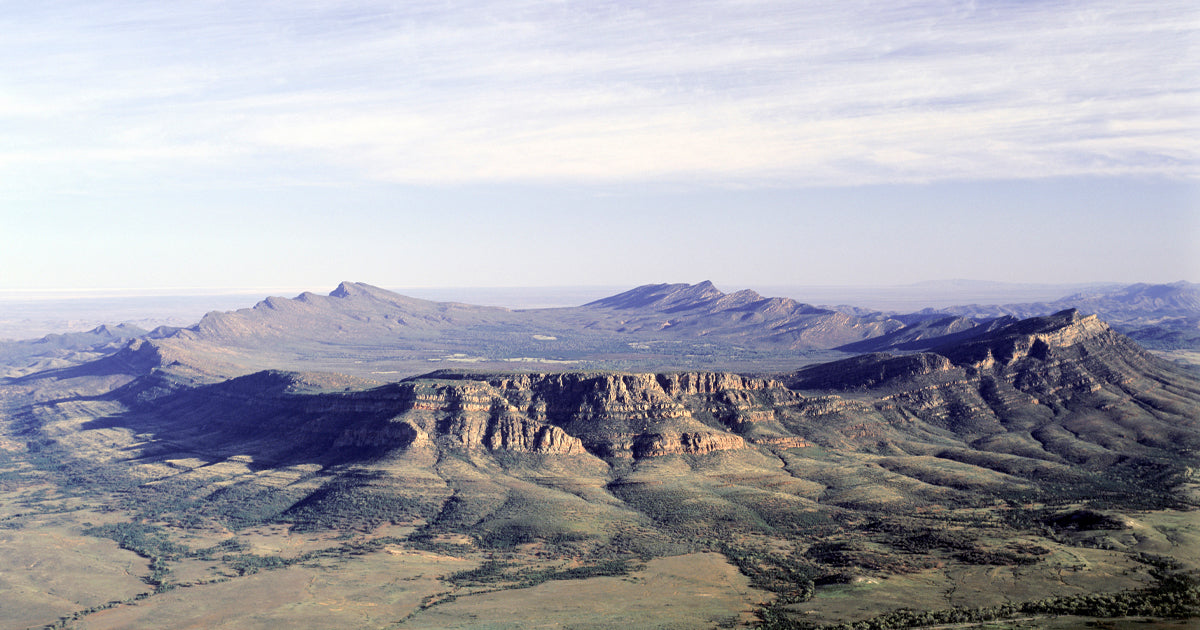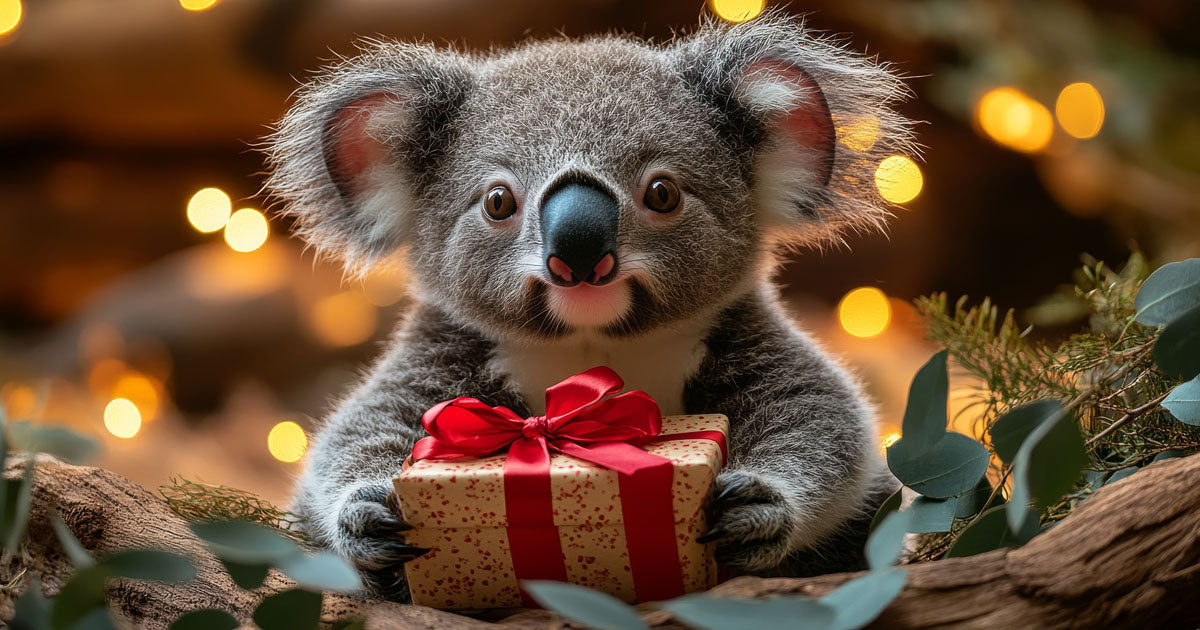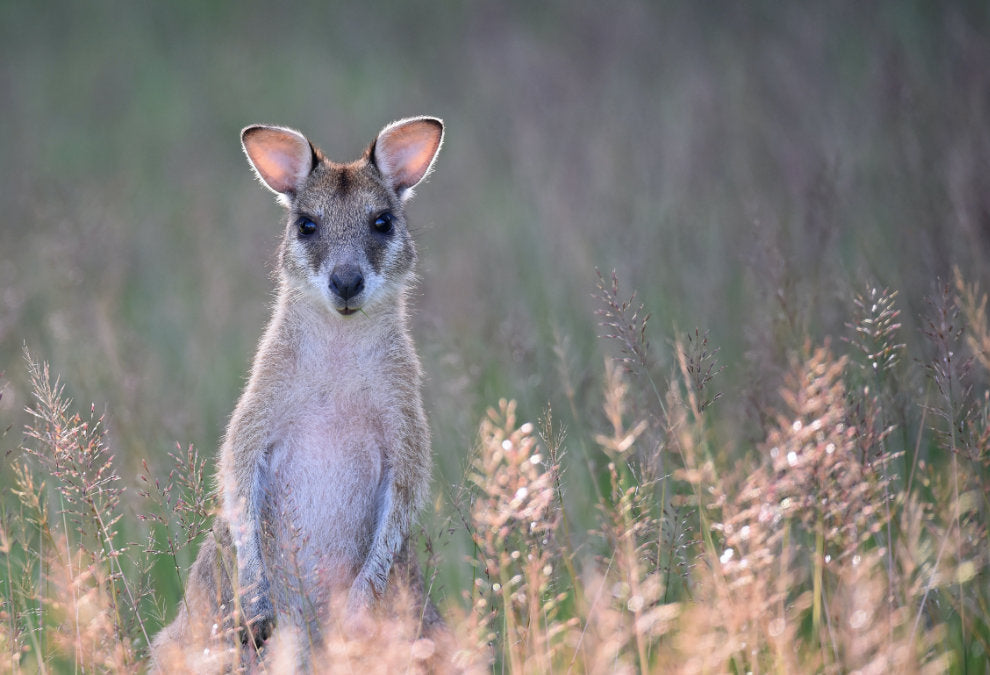
Significant Events for Indigenous Australians in November
November is a month of remembrance and reflection for Indigenous Australians. It marks the anniversaries of events that reveal both the enduring resilience and the deep injustices experienced by Aboriginal and Torres Strait Islander peoples across two centuries of Australian history.
From the violent frontier massacres and deliberate mass poisonings of the 19th century to the lives and legacies of resistance leaders, poets and political activists, these moments chart the continuing struggle for survival, sovereignty and self-determination. They also remind us that the impacts of colonisation are not confined to the past - they reverberate through contemporary Australia in the form of systemic inequality, political tension and unfinished calls for justice.
The following accounts - spanning from the massacre of the Gamilaraay people near Moree in 1838 to the 2024 censure of Senator Lidia Thorpe for her outspoken protest against the British monarchy - together trace a timeline of truth-telling. Each story stands as a testament to courage, endurance and the ongoing pursuit of justice for First Nations peoples.
28 November 1838 - Massacre of Gamilaraay People near Moree, NSW
On this day, nine Gamilaraay men, women and children were murdered near present-day Moree by Charles Eyles, William Allen and James Dunn, all employees of squatter Robert Crawford.
In a bid to conceal their crime, the perpetrators burned and buried the bodies, which were discovered months later. Despite warrants for their arrest, Attorney-General John Hubert Plunkett chose not to prosecute, reflecting the entrenched racism of the colonial justice system and the culture of impunity surrounding violence against Aboriginal people.
This massacre is a stark reminder of the violent frontier conflicts that characterised Australia’s colonisation. It shows how Indigenous lives were devalued and how colonial authorities turned a blind eye to atrocities.
29 November 1847 - Poisoning of Bundjalung People at Kangaroo Creek near Grafton, NSW
On this date near Grafton, Thomas Coutts deliberately poisoned twenty-three members of the Bundjalung Nation at Kangaroo Creek. By offering damper laced with arsenic to a group of unsuspecting Aboriginal people, Coutts inflicted horrific suffering and death. Although arrested, he was not tried.
The official disregard for the victims illustrates the injustices faced by Indigenous Australians under colonial law. Deliberate poisonings with arsenic and strychnine were a known practice in rural areas - brutal tactics used by colonisers to dispossess Aboriginal people of their ancestral homelands.
11 November 1895 - Ivanhoe Station Massacre, East Kimberley, WA
On this day, approximately twenty Aboriginal people were killed near Ivanhoe Station on Gajirrawoong and Miriwung lands in the East Kimberley.
In reprisal for accusations of cattle theft, police raided an Aboriginal camp and opened fire on men, women and children who were attempting to flee. The lack of accountability for police involved highlights the deep inequalities within the colonial legal system. Understanding this massacre is essential to comprehending both the historical trauma of colonisation and the ongoing impact of violence in communities today.
Each of these events - the massacres at Moree and Ivanhoe Station and the Kangaroo Creek poisoning - is critical to understanding the violent dispossession experienced by Aboriginal communities throughout Australia’s colonisation. The lack of justice and recognition for these atrocities has contributed to ongoing trauma and injustice that First Nations peoples continue to face.
Acknowledging and documenting these dark chapters is essential to creating a more truthful and inclusive national story. As the modern Australian nation grapples with its colonial past, confronting these events is crucial to enable healing and understanding between Aboriginal and non-Aboriginal Australians.
14 November 1852 - Bussamarai, Aboriginal Resistance Leader, Shot by Police near Surat, QLD
On 14 November 1852, Bussamarai (often called “Eaglehawk”), a Mandandanji resistance leader, was shot and killed by police near Surat, Queensland. His life and death symbolise fierce Aboriginal resistance to the invasion of their lands.
Born circa 1795, Bussamarai led his people in defending homelands along the Balonne and Maranoa rivers, encompassing what is now Surat, Roma and Mitchell in south-western Queensland. After explorer Thomas Mitchell’s 1846 expedition drew colonists to the region, traditional life was disrupted and conflict over land and resources escalated.
A formidable strategist, Bussamarai united neighbouring groups - including Gunggari, Yiman and Barunggam - in alliances. Between 1848 and 1849, Mandandanji actions included the dramatic theft of 3,000 sheep from Dulacca Station by more than 300 warriors, demonstrating tactical skill and resolve.
Resistance was cultural as well as physical. In a corroboree near Surat, warriors reenacted battles with colonisers on horseback, with the Mandandanji emerging victorious - a defiant warning to occupiers.
Colonial retaliation intensified. Land Commissioner Roderick Mitchell led campaigns between 1850 and 1851 with the Native Police to “disperse” Aboriginal populations. The Mandandanji suffered heavy losses, including during the Yuleba Creek Massacre in March 1850.
Despite mounting pressure, Bussamarai persisted, at times mediating between his people and colonisers. In April 1852 he guided explorer Hovenden Hely in a search for Ludwig Leichhardt, and was highly regarded for his knowledge of Country.
In November 1852, near Yalebone Creek, Sergeant James Skelton and Native Police opened fire without provocation, killing Bussamarai and five others. Although later claims suggested he should not have been shot, impunity prevailed and “shoot on sight” practices continued.
Bussamarai’s death marked the end of organised Mandandanji resistance, but his legacy endures as a symbol of the struggle for land and sovereignty. His strategic brilliance and unwavering defence of culture are part of the broader story of resistance during the frontier wars - a reminder that the fight was for land, law, culture and identity. His courage remains a powerful testament to the strength and resilience of Indigenous peoples.
3 November 1920 - Birth of Oodgeroo Noonuccal, Poet, Activist and Educator
Born Kathleen Jean Mary Ruska, Oodgeroo Noonuccal (formerly Kath Walker) was a trailblazing poet, political activist, artist and educator. The first Aboriginal Australian to publish a book of verse, she used poetry as a vehicle for advocacy, pride and cultural continuity.
Her activism began during World War II in the Australian Women’s Army Service. In the 1940s she joined the Communist Party of Australia, then the only party opposing the White Australia policy. As Queensland state secretary of Federal Council for the Advancement of Aborigines and Torres Strait Islanders (FCAATSI) in the 1960s, she campaigned for constitutional reform to grant Aboriginal people full citizenship rights, even confronting Prime Minister Robert Menzies in 1963 about legal discrimination.
In 1964, Oodgeroo’s We Are Going became the first poetry collection by an Aboriginal Australian, a commercial success that made her one of the country’s highest-selling poets. Her “plain and simple” style was unapologetically political. She embraced criticism, insisting her work was activism aimed at the widest possible audience.
In the 1970s she founded Moongalba (“sitting-down place”) on North Stradbroke Island, establishing the Noonuccal-Nughie Education and Cultural Centre. She educated more than 26,000 children - Aboriginal and non-Aboriginal - about culture and caring for Country and worked with universities to improve teacher training.
Awarded an MBE in 1970, she returned it before the 1988 Bicentenary in protest, adopting her traditional name Oodgeroo Noonuccal (“paperbark tree” of the Noonuccal people). Collaborations with her son, artist Kabul Oodgeroo Noonuccal, included The Rainbow Serpent for Expo ’88. Oodgeroo passed in 1993, aged 72.
Her contributions to literature, activism and education left a lasting impact. She gave voice to struggle and hope, and her legacy continues to inspire those working for justice and cultural pride.
19 November 2004 - Cameron “Mulrunji” Doomadgee’s Death in Custody, Palm Island, QLD
Cameron Doomadgee (Mulrunji), a 36-year-old Indigenous man, died in police custody on Palm Island, 65 km off Townsville.
Gazetted as an Aboriginal reserve in 1914, Palm Island was used as a “penitentiary for troublesome cases” during the Protection Era. People from more than 40 Queensland tribes were forced from Country and sent there as unpaid labourers.
Mulrunji’s death marked a pivotal moment in the struggle for justice. Stopped by police for allegedly causing a public nuisance, he was arrested by Senior Sergeant Chris Hurley and died less than an hour later in a cell.
An autopsy revealed catastrophic internal injuries - four broken ribs and severe damage to liver and spleen - comparable to a serious car crash. Hurley claimed Mulrunji fell, the community suspected excessive force.
Palm Island erupted in grief and anger. Fuelled by years of pent-up frustration over mistreatment and racism, residents took to the streets in protest, during which the police station, courthouse and Senior Sergeant Hurley’s residence were set on fire.
The police response was brutal. Beginning around 5am on 27 November 2004, more than 50 - and by some accounts over 100 - heavily armed and masked officers, including members of Queensland’s Special Emergency Response Team (SERT), launched raids and home invasions on at least 18 families, making arrests without warrants and deploying assault rifles, tasers and other tactical weapons.
Conducted in homes where women and children were present, these operations caused widespread fear and lasting trauma throughout the Palm Island community.
A 2005 inquest found Mulrunji’s fatal injuries were sustained during a physical confrontation with the much taller and heavier Hurley.
In 2007, Hurley was charged with manslaughter - a Queensland first in a death-in-custody case - but was acquitted by a Townsville jury.
A second inquest in 2010 reaffirmed that injuries sustained in custody led to death; no further legal action followed.
Mulrunji’s death was the 147th Indigenous death in custody since the 1991 Royal Commission’s findings.
Since 1991, there have been over 600 Indigenous deaths in custody. Data from the Australian Institute of Criminology shows the number of deaths continues to be high, with recent years including the highest death toll in decades.
Despite the hundreds of Aboriginal deaths in custody since the 1991 Royal Commission and criminal charges occasionally being laid after critical coronial findings, no police or corrections officer in Australia has ever been convicted over a death in custody.
In 2018 the Queensland Government settled a class action for $30 million and apologised for the discriminatory police response.
Hurley later received a confidential payout and was transferred to the Gold Coast, where he faced multiple disciplinary actions for offences including dangerous driving and assault - among them an attack on a female police officer. Suspended without pay while facing a string of charges, he ultimately took medical retirement in 2017.
Two decades on, Mulrunji’s story remains a powerful reminder of the urgent need for accountability, equality and systemic change.
9 November 2019 - Kumanjayi Walker Killed by Police at Yuendumu, NT
The death of Kumanjayi Walker, a 19-year-old Warlpiri man (noted here as “Kumanjayi” in keeping with cultural practice), exposed deep issues of racism, police accountability and the treatment of Indigenous peoples.
Police officer Zachary Rolfe and other officers were sent to arrest Kumanjayi at his home for breaching bail. They had police dogs and were armed with two AR-15 assault rifles and handguns.
During the confrontation, Kumanjayi - armed with a pair of scissors - stabbed Constable Rolfe in the shoulder. Rolfe then fired three shots at close range; the first was non-fatal and evidence later showed the second and third were fired from within a range of five centimetres, while Kumanjayi was already on the ground.
Kumanjayi was subsequently handcuffed, dragged from the house and taken to the police station, where he died a little over an hour later. He received no medical treatment and drew his final breath on the floor of a police cell. The Northern Territory coroner later found his death was “avoidable.”
The community gathered outside the station seeking information, facing a heavy police presence and scant communication. Protests followed. Rolfe was charged with murder four days later and, in March 2022, acquitted by a jury that raised questions about fair representation in a jurisdiction where nearly 30% of the population is Indigenous.
A coronial inquest led by Coroner Elisabeth Armitage began in September 2022, extending amid delays and legal challenges. Testimony uncovered a disturbing culture in parts of the NT Police, including allegations of racist and homophobic language at senior levels. Rolfe himself said racist remarks were “normalised.”
While the Police Commissioner acknowledged racism exists, he said it was not “pervasive,” prompting scepticism from Kumanjayi’s family and community leaders. Warlpiri elders’ calls for a firearms ban in their community have so far been rejected. Findings are expected before the end of this year.
Kumanjayi’s story underscores the need for far-reaching reform. It is yet another urgent call to ensure accountability, respect and cultural safety in policing.
18 November 2024 - Senator Lidia Thorpe Censured for Heckling King Charles III
Australian senators voted 46–12 to censure Lidia Thorpe for heckling King Charles III during his address in Parliament House the previous month, expressing their “profound disapproval” of her protest. Thorpe, a Gunnai, Gunditjmara and Djab Wurrung woman, called out “you are not my King” and “this is not your land” to highlight the impacts of British colonisation.
The motion, while politically symbolic and carrying no legal effect, stated her actions were “disrespectful and disruptive” and should disqualify her from representing the Senate on delegations.
Thorpe later said she had been denied the chance to respond in the chamber due to a delayed flight, adding: “The British Crown committed heinous crimes against the first peoples of this country… I will not be silent.”
Reactions were mixed. Many MPs and some Aboriginal and Torres Strait Islander leaders criticised the protest, while others praised it for drawing attention to ongoing inequalities in health, wealth, education and life expectancy and to the unresolved question of sovereignty.
Thorpe is among those advocating for a treaty between the Australian government and First Peoples-something Australia has never concluded, unlike New Zealand and other former British colonies.
Thorpe’s activism has previously drawn headlines. In 2022, during her swearing-in, she referred to Queen Elizabeth II as a coloniser and was required to retake the oath.
The Constitution mandates that before taking his or her seat, that every Member of Federal Parliament must swear an oath that they “will be faithful and bear true allegiance to His Majesty King Charles the Third, His heirs and successors.”
Conclusion
The significant events remembered in November reflect the full spectrum of Indigenous experience in Australia - from the horrors of colonisation to the strength of resistance, from the brilliance of cultural leaders to the courage of modern advocates challenging entrenched power.
Acknowledging these histories is vital to understanding how the legacies of violence, displacement and discrimination continue to shape lives today. Yet these stories also reveal an unbroken continuum of pride, creativity and resilience - embodied in leaders like Bussamarai, artists like Oodgeroo Noonuccal and activists like Lidia Thorpe.
As we reflect this November, may we not only mourn the injustices of the past and present, but also honour the unyielding spirit of survival that defines Australia’s First Peoples. Through remembrance, truth-telling and respect, we move closer to a future grounded in justice, equality and reconciliation.












